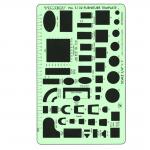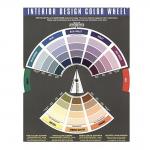
Submitted by furniche
Furniture, Fire Safety and Flame Retardants are usually not at the top of our minds as we begin the furniture shopping process.
At a recent Furniture Market in High Point, North Carolina, the Furniche team met the folks from Chemtura. They are dedicated to educating the home furnishings industry and consumers on the importance of fire safety in furniture. We asked them to provide us with this article to help our visitors at Furniche.
The Truth & Nothing but the Truth! There may be links or ads on our site that pay us a commisson if you "click" and purchase something... Thanks! (it helps us keep the lights on! ) Now you may keep on reading!
5 Things to Know about Fire Safety in Furniture
While style, color, and comfort are top of mind when shopping for furniture, an often overlooked feature is a sense of safety and security that can come with your investment. Protecting your home and family from the risk of fire means making sure you have working smoke detectors and a fire escape plan, but it also means making sure the furniture you buy is designed to help protect against the risk of fire.
Flame retardants, as the name implies, are commonly added to upholstered furniture to do just this: help prevent or slow the rate of fire. Flame retardants are incorporated into many household products to provide fire resistance to otherwise flammable materials. In upholstered furniture, flame retardants are added during the production process of foam making it harder to ignite. Flame retardants can also slow the growth of a fire once it starts, providing additional time for your family to escape.
Failure to plan is the most common furniture mistake. Be sure to check out the wide selection of furniture space planners, color wheels and furniture templates available from Furniche.com
As little is known about flame retardants by the average consumer, here are five important facts to know as you shop for your next couch, love seat, or recliner.
Five Facts: Flame retardants, fire safety and your furniture:
- Household fires remain a major threat. According to the National Fire Protection Association, there were 381,000 fires in 2013, causing 3,240 deaths and 15,925 injuries. Home fires can burn out of control in just three minutes. With a timeframe as small as this, seconds to escape matter.
- Upholstered furniture is one of the primary fuel sources for a household fire. In fact, upholstered furniture accounts for the largest share of fire deaths of any first item ignited in U.S. home fires (24 percent). This is why furniture manufacturers take precautions to reinforce the fire safety of their products.
- Flame retardants work to protect you and your family. In a typical piece of furniture, fire safety experts have found that flame retardants can prevent a fire from starting or delay the rapid spread of fire anywhere from several seconds up to several minutes[1], providing critical time for your family to safely escape. From 1980 to 2000 — during the same time that flame retardants became common – furniture fires in the US dropped from just under 25,000 to around 7,000.
- Flame retardants are safe for their intended use. Like all industrially produced chemicals, the components of flame retardants have been tested for human health and environmental safety using standardized testing protocols and the EPA has reviewed those results. When considering the safety of flame retardants, what matters is the level of exposure. Exposure to flame retardants in the home is low, as there is so little of these substances in dust that they are measured in parts per million or parts per billion.
- Not all flame retardants are the same. Each specific type of flame retardant has unique properties and molecular structure. Media reports that look at the negative health impact of flame retardant chemicals often focus on outdated chemicals or small scale studies. For example, the PBDE (polybrominated diphenyl ethers) once used in furniture, PentaBDE, was replaced in furniture by a greener alternative more than 10 years ago. The flame retardants in couches today are safe and work to prevent house fires from spreading and escalating.
Despite a decrease in home fires, fires remain a real threat and fire safety should not be taken granted. It’s important to be knowledgeable on the facts around fire safety and flame retardants as you consider your next purchase.
A couch could be the perfect fit in terms of style and comfort, but you should also make sure it’s designed to keep your family safe from the risk of fire.






